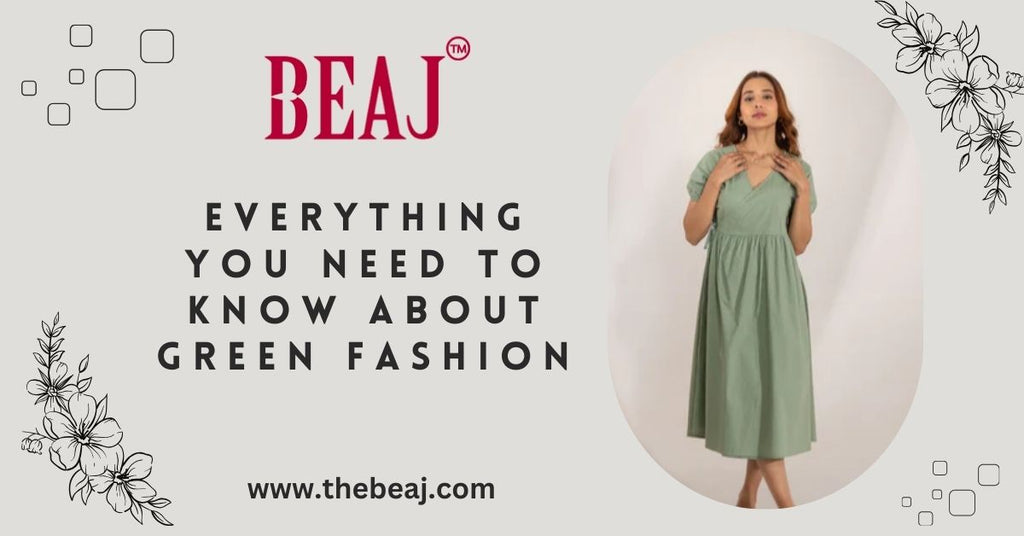Everything you need to know about green fashion
Posted by INDERPREET SINGH

In today's fast-paced world, there has been a growing awareness of the fashion industry's environmental impact. As a result, more and more consumers seek sustainable and eco-friendly alternatives to traditional clothing. This shift towards "green fashion" is not just a passing trend – it's a movement that is here to stay. In this blog, we'll explore everything you need to know about green fashion, including its importance and how you can embrace it in your wardrobe.
What is Green Fashion?
Green fashion, also known as eco-fashion or sustainable fashion, refers to clothing and accessories produced in an environmentally and socially responsible manner. This means taking into account the entire lifecycle of a garment – from the sourcing of materials to production, distribution, and disposal. Green fashion aims to minimize the negative impact on the planet and promote ethical practices within the industry.
Importance of Green Fashion:
- Environmental Impact: The fashion industry is one of the most significant contributors to environmental pollution and waste. From producing raw materials like cotton and polyester to the chemical dyes used in clothing manufacturing, making clothes can have a significant ecological footprint. Consumers can help reduce the industry's carbon emissions, water usage, and waste generation by choosing green fashion options.
- Ethical Considerations: Besides environmental concerns, green fashion addresses social and ethical issues within the industry. Many clothing manufacturers rely on cheap labour and unsafe working conditions in developing countries, leading to exploitation and human rights violations. By supporting brands prioritizing fair labour practices and paying workers a living wage, consumers can help promote social justice and improve working conditions for garment workers worldwide.
- Innovation and Creativity: Embracing green fashion doesn't mean sacrificing style or quality. Many sustainable fashion brands are leading the way in innovation and creativity. From using innovative materials like organic cotton, hemp, and recycled polyester to experimenting with cutting-edge manufacturing techniques, green fashion designers are proving that eco-friendly clothing can be both fashionable and functional.
How to Embrace Green Fashion?
- Choose Sustainable Materials: When shopping for clothes, look for garments made from sustainable materials like organic cotton, bamboo, Tencel, or recycled fibres. These materials are better for the environment and often have less impact on human health than conventional fabrics.
- Support Ethical Brands: Do your research and support fashion brands that prioritize sustainability, transparency, and ethical production practices. Look for certifications like Fair Trade or GOTS (Global Organic Textile Standard) to ensure that the clothes you buy are produced in a socially responsible manner.
- Reduce, Reuse and Recycle: Embrace the principles of reduce, reuse, and recycle in your wardrobe. Instead of constantly buying new clothes, try to make the most of what you already own by mixing and matching pieces, repairing items when they break, and donating or recycling clothing you no longer wear.
- Mindful Consumption: Be mindful of your consumption habits and avoid impulse purchases. Before buying something new, ask yourself if you need it and if it aligns with your values and lifestyle. Investing in quality, timeless pieces that will last for years is a more sustainable choice than buying cheap, fast-fashion items that quickly end up in landfills.

